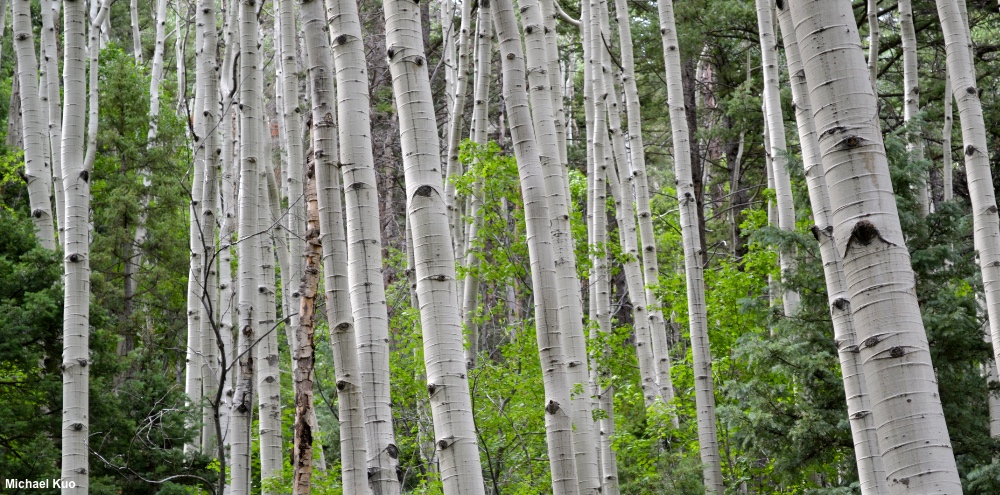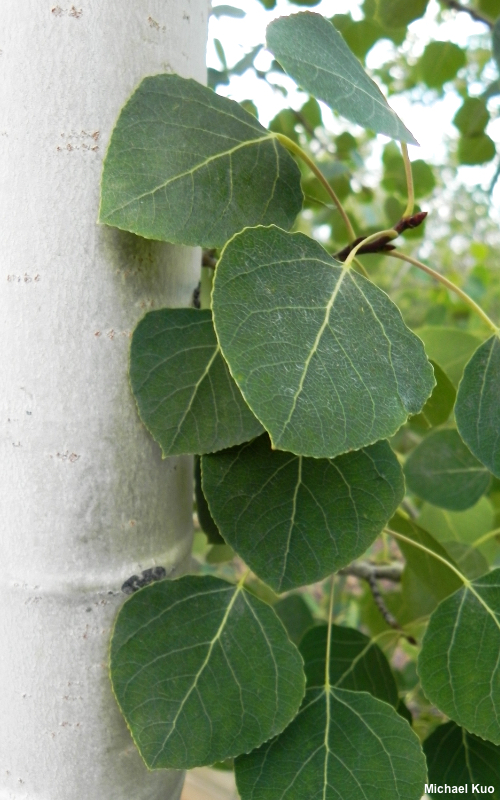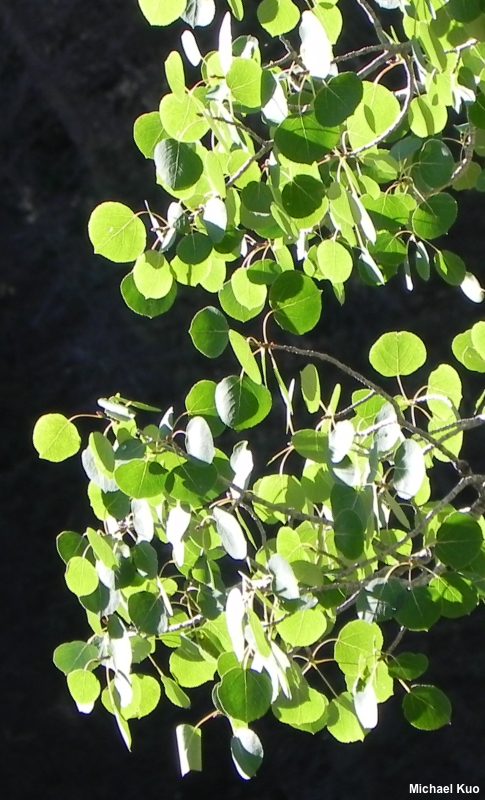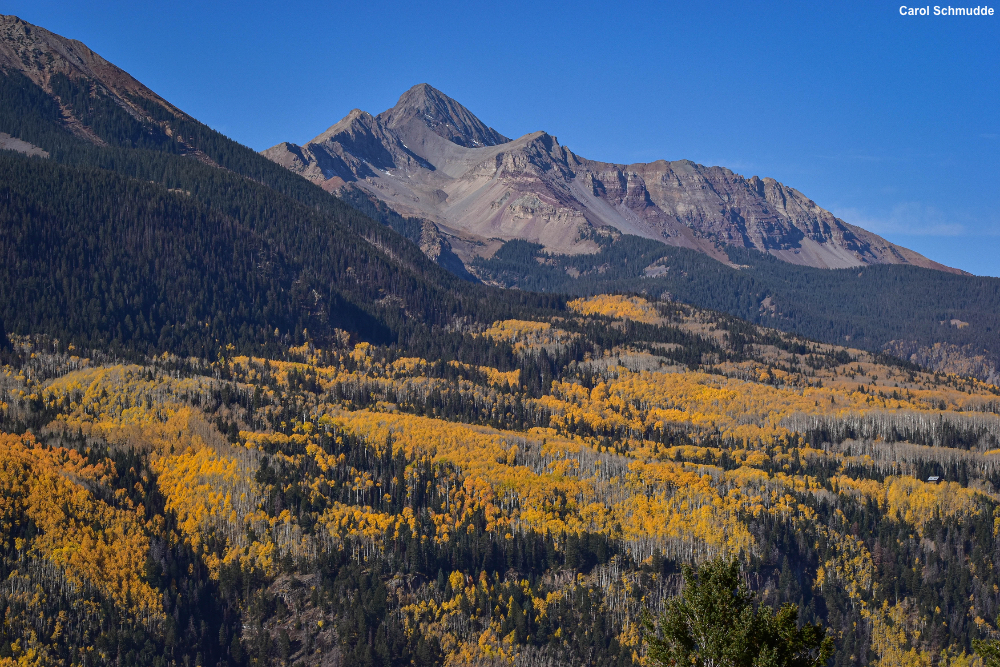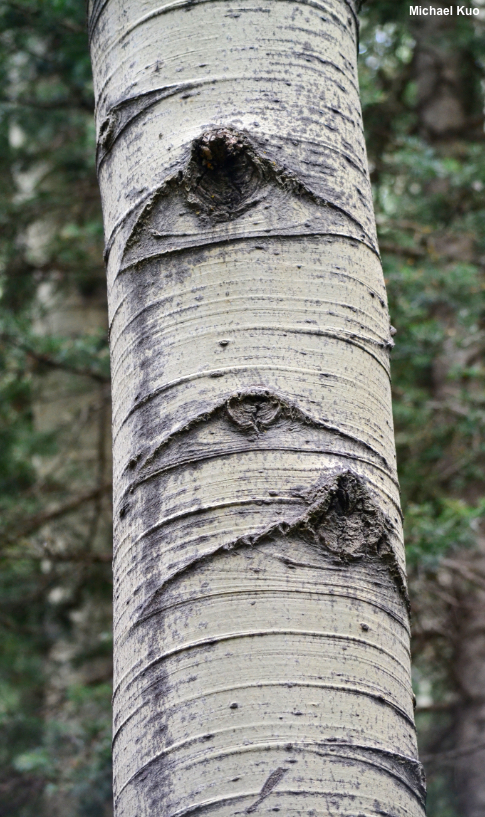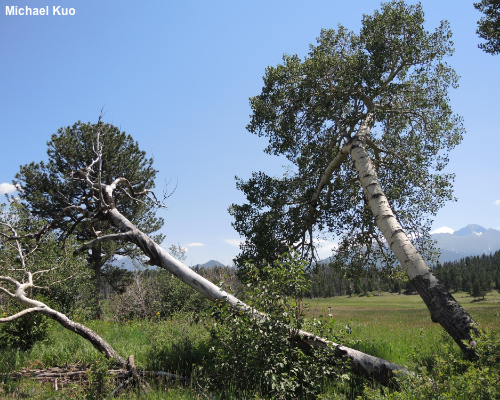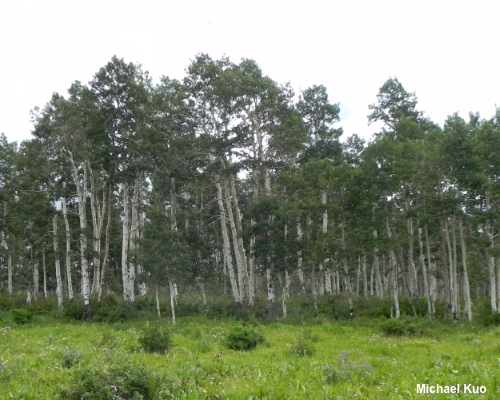 Populus tremuloides (quaking aspen) |
|
Distributed throughout northern and montane North America, quaking aspen is well known for its smooth, white bark and gorgeous golden colors in the fall. Other distinctive features include the eye-shaped branch scars, and the "quaking" roundish leaves, which have long petioles with thick, twisted bases, causing the leaves to tremble in the slightest breeze. Look-alike trees include paper birch (leaves pointier, bark smooth only in younger trees, becoming "peely" and "strippy" with age) and, in the upper Midwest and northeast, big-toothed aspen (leaves with large, blunt teeth). Quaking aspen is a pioneer species, quickly filling spaces created by windthrow, fire, and logging. New stands of young aspens can be so dense that it's impossible for an adult to get through them. Because the tree reproduces both sexually and asexually, aspen groves are often composed of one organism—one aspen tree that has cloned itself again and again through its root system. This means that aspen groves are contenders for the "largest organism on earth" award. For mushroom enthusiasts aspen groves can be amazing places to visit. Mycorrhizal associates of quaking aspen are numerous: many species of Amanita, including Amanita populiphila and Amanita species 05 (both of which appear to associate only with aspens and closely related species), and many other amanitas that are not solely aspen-associated but regularly appear with it—especially Amanita muscaria formosa; species of Cortinarius, especially Cortinarius trivialis; Hebeloma insigne; Hemileccinum subglabripes; many Inocybe species; Lactarius controversus; many Leccinum species; Paxillus vernalis; Russula aeruginea; Suillus subaureus; and Tricholoma populinum. Among the saprobic and parasitic mushrooms that decompose aspen wood and litter are Crepidotus cinnabarinus, Flammulina populicola, Heliocybe sulcata, Mycena haematopus cuspidata, Paraxerula americana, Peniophora rufa, Phellinus tremulae, Pholiota squarrosa, and Pleurotus populinus. Aspen associates with uncertain trophic status include Entoloma lividoalbum and Floccularia straminea. |
|
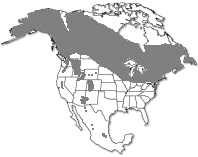
|
|
|
|
|
|
|
|
|
|
|
|
Kuo, Michael (October, 2020). Populus tremuloides (quaking aspen). Retrieved from the MushroomExpert.com website: www.mushroomexpert.com/trees/populus_tremuloides.html All text and images © , mushroomexpert.com. |
